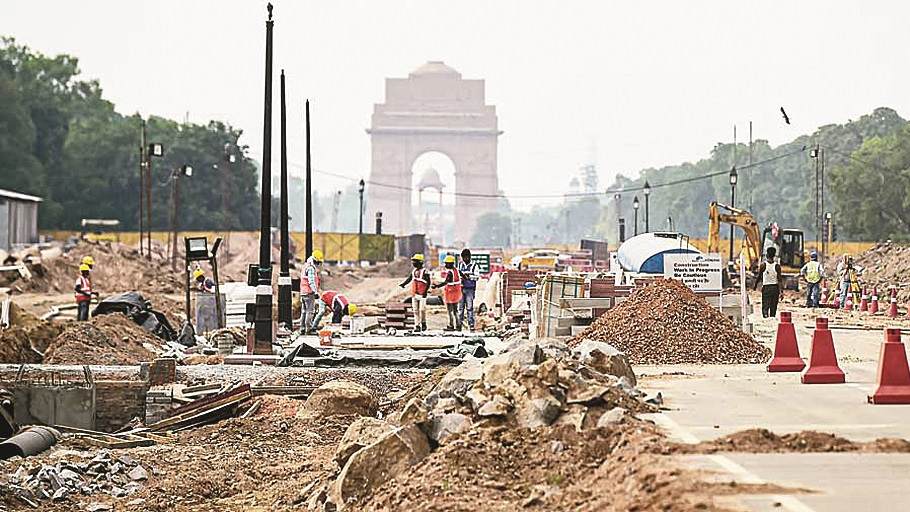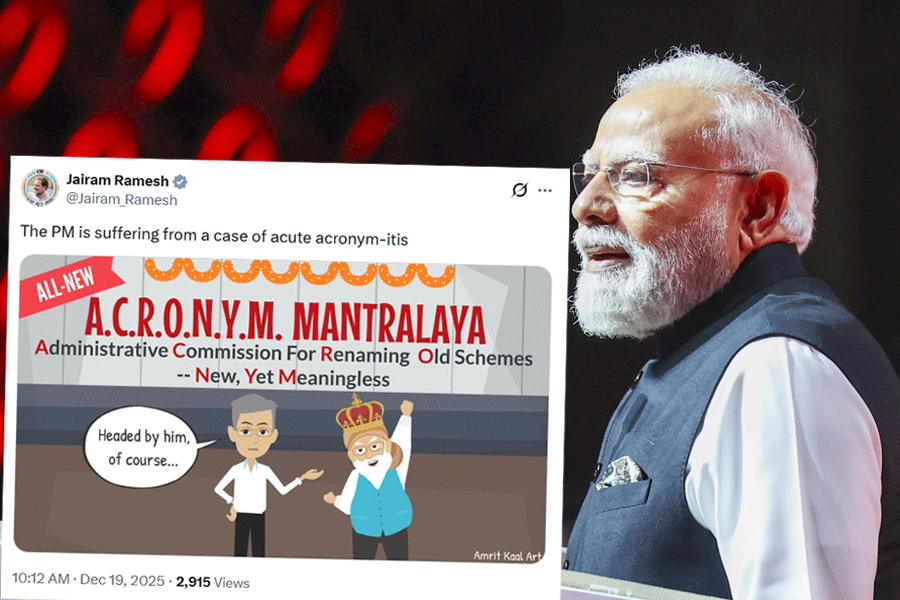The greatest products of architecture are not individual but social creations, the offspring of nations in labour, wrote Victor Hugo. Like childbirth, construction is hard work, replete with blood, sweat and tears. And from that bloody mess, something beautiful emerges. There is consensus, celebration and excitement that only something new can give rise to.
This is how it should have been with the rebuilding of the Central Vista in New Delhi. Reconstruction of a capital city is the apogee of architectural achievement — the construction perceived as a microcosm of national identity set in stone. Lutyens’ Delhi, for all its unquestioned grandeur, was the colonial architect’s vision for India — a proud British government discharging its civilizing mission by towering over an ancient people.
Any transformation of its structures that aspired to greatness and permanence needed to take everyone along. It had to be, in some key senses, what the British were not — participatory, popular and post-colonial. However, with each passing day, the rebuilding of the Central Vista by the Central government becomes more polarized. The latest episode is the judgment of the Delhi High Court upholding the legality of its construction work during the pandemic.
The claim made in this case was that all construction activity as part of the Central Vista rebuild should be halted during the pendency of the lockdown owing to the health risks that it posed to the workers and, consequently, the residents of Delhi. The legal case was always on a weak footing. The Delhi Disaster Management Authority had allowed the continuance of construction activity where workers reside on site, even during the lockdown. With both the government and the construction company claiming in court that workers were indeed residing on-site and had been provided an enviable list of facilities, ranging from oxygen supply to RT-PCR tests (at a time when both were difficult to find for less ordinary residents of Delhi), the legal case was sealed.
While one can legitimately question the portion of the judgment, which upholds the movement pass granted for ferrying of workers and materials (disallowed under law), such legal nitpicking would miss the wood for the trees. This case and the earlier cases filed on this matter were never primarily about the law. That’s because making a new Parliament or a new house for the prime minister, besides other buildings to house government offices, cannot ever solely be judged against arcane building regulations, land use restrictions and similarly obscure provisions of law that only a trained lawyer can find. They must be held to a standard of transparency and public engagement where no citizen who wishes to be heard feels excluded. This requires those in power to rise above combat and hostility to take decisions that everyone, irrespective of whether they agree with them or not, can come to respect.
Courts of law are well suited to take public discourse to this level. This is especially why, when the Delhi High Court ascribed mal-intent to the petitioners who filed this case, it struck a body blow to fostering civil engagement between those who held differing positions. Even the most ardent advocate of the Central Vista project would admit, perhaps in a private moment, the sheer travesty of building a landmark national complex in the midst of the worst pandemic the city has ever seen. Especially at a time when up to 395 people were dying in Delhi every day, many for lack of oxygen in hospitals, to insist on continuing construction appeared unseemly and cruel.
Undoubtedly the petition, couched in the language of law, was expressing this sentiment. The court was well within its authority to dismiss it. But to order the petitioner to pay costs of one lakh rupees for filing a “motivated petition” with “ill-intent” exacerbated the acrimony already present between supporters and opponents of this project. Just so that the significance of this order is clear — courts, even when faced with public interest litigations filed by proxies of politicians or persons seeking publicity, rarely order any costs. To make an exception in this case leaves the court looking like a combatant when it ought instead to have been a healer.
So what does this mean for the Central Vista project? It was always clear from the manner in which the government besieged itself once criticism of the project began that the rebuild was going to continue, one way or another. The pandemic, however, provided an opportune pretext to pause, engage with critics, and build a reasonable consensus. This was not to be. Acrimony and dissension have become the real foundation stones of the new Central Vista.
History reveals how such contested architectural projects often end up. In the early 19th century, John Soane was entrusted with rebuilding the law courts, office blocks for Parliament, the Bank of England and a Royal Entrance to the façade of the House of Lords in London. Bitter resentment greeted Soane’s selection as well as his designs. Despite objections, Soane completed his projects, much to the delight of Emperor George IV. But destiny had different ideas. Large parts of his rebuilding were destroyed in a fire in the Westminster Palace in 1834; the law courts were taken down in a few decades, and the Bank of England was demolished and replaced.
The new Central Vista promises to be grand and awe-inspiring, symbolizing the rising power of the nation. This is what Soane had set out to do in his own way — to build a capital worthy of a global empire. Willy-nilly, we have copied a colonial vision of power and grandeur, rather than coming up with something truly original — a new Central Vista that does not place the government but the citizens of India at its core.
That project would have taken a very different shape and if done well become an architectural landmark, not only for Delhi and India but the postcolonial global South. That, unfortunately, is unlikely to be. The fate of the new Central Vista is likelier to be the fate of John Soane’s buildings — contested in their conception, dividing opinion during their brief existence despite their architectural merits and, ultimately, forgotten. There is still time to learn from history and avoid this calamity.
Arghya Sengupta is Research Director, Vidhi Centre for Legal Policy. Views are personal











